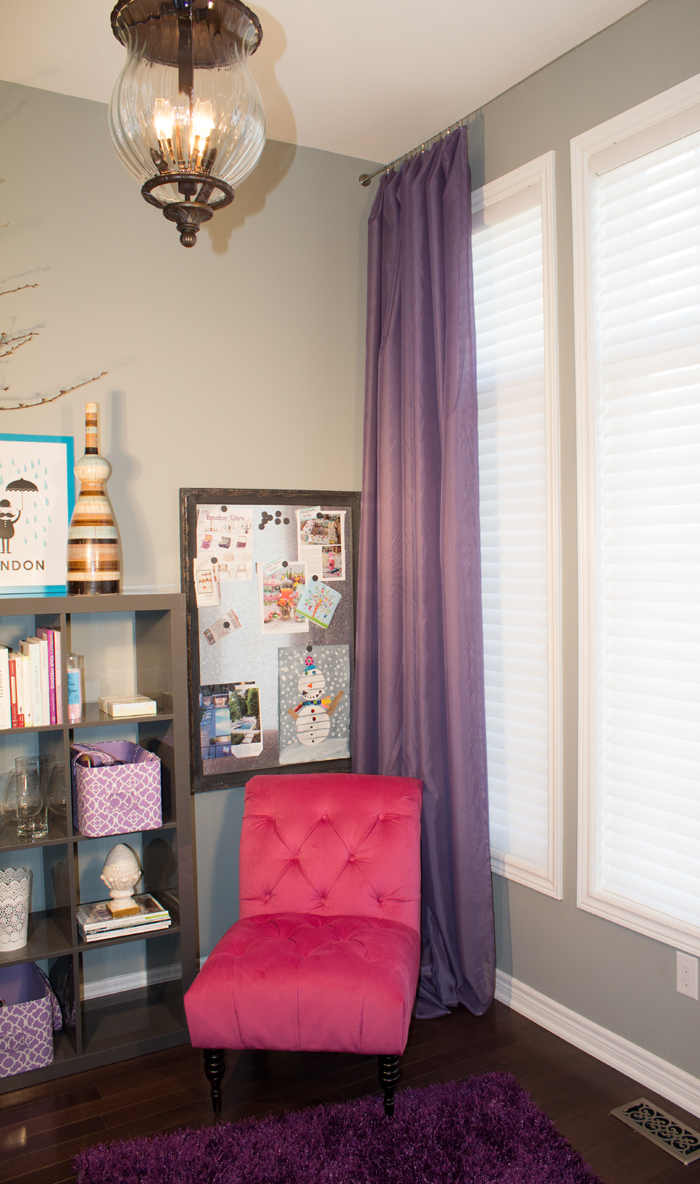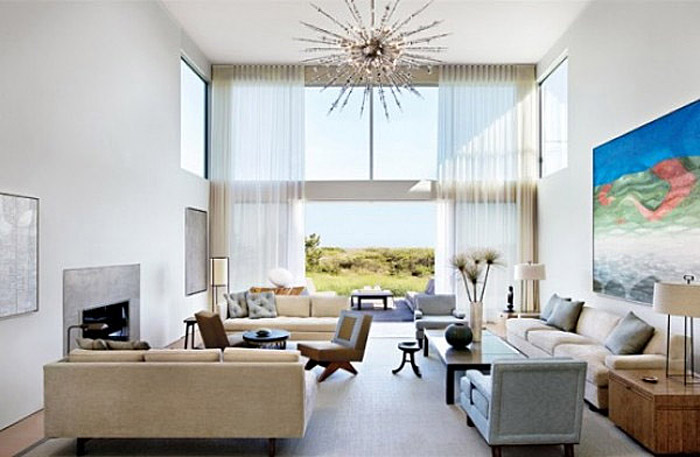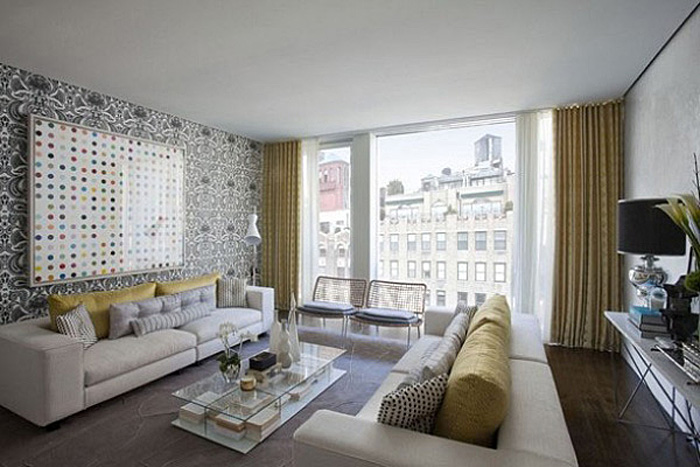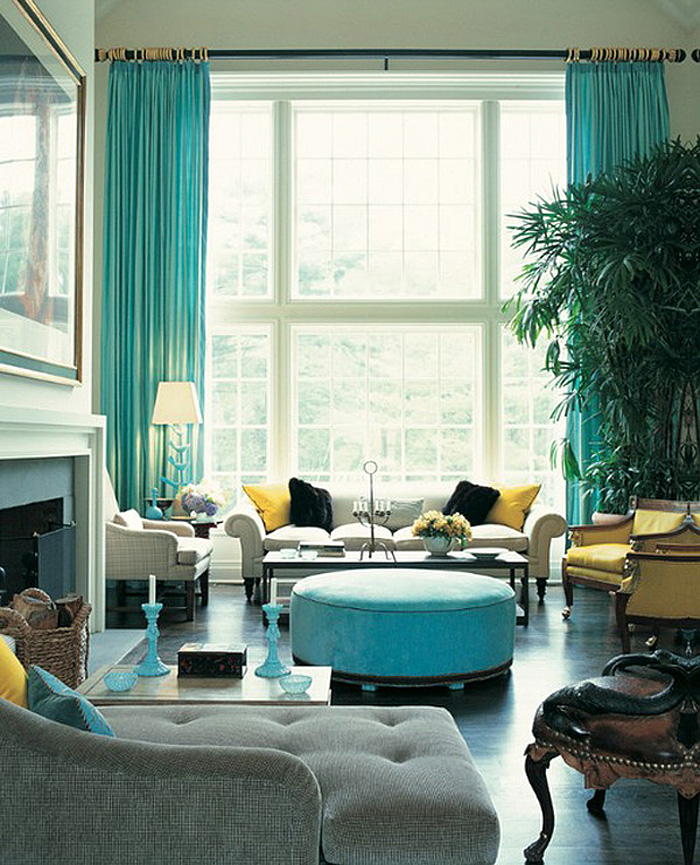One element of home decor that is a necessity as well as an esthetic is window coverings. They are a necessity for privacy and sun blocking and they are an esthetic because they can complete (or provide a starting point) for every room. The windows found in today’s modern construction are big and beautiful, providing for sweeping views and allowing for wonderful sunlight to stream in. Sounds wonderful, but in reality we all are faced with big, awkward windows that do let in light and provide views but often it’s of our neighbours yard or a wall or other rather unsightly view.
Or, we are faced with windows that have character and charm but may be smaller or awkwardly shaped.
So, we’re kinda left with a conundrum; we need windows to let light in, but they are not always the easiest design to deal with. How we treat windows has changed and many homeowners are faced with challenges on how to best utilize the design. Throughout my years of home ownership and designing and decorating my spaces I’ve treated three things as my first priorities: walls, lighting and windows. I have always believed that by conquering those three elements first, you can bring together any design. You may not be able to buy a new couch or dining set for your new home (plus the one your Mom gave you in your first condo will work just fine for a bit!), but you can cheat any designer look just by ensuring you have a great colour on the wall, your space is lit correctly and your windows become the showpieces they should be.
I have a few tips that you should keep in mind when selecting window coverings. I have the same challenges as you, and I have seen a few mistakes (okay, maybe a few are my own), so I hope you can find some guidance here.
- Really do your research first. Take time to think about what you need from your window. Do you need privacy? Is privacy needed all the time or only at night? Do you need to filter light or completely block it? Do you just want to enhance your window with drapery treatments? Once you have thought about that, next you can figure out what style is best for you.
- Think about how much you want to spend. I tend to spend more on the window coverings that are in my public spaces (the spaces that everyone sees, like the kitchen, living areas etc.) and in spaces in which I spend the most time. I do try to stick to a budget and it’s easier to do that the more research you do. Go to your local window covering places, big box stores and custom spots. It will give you an idea of what things cost so you are prepared as to what you may have to spend. It will also give you a great idea of what is actually out there. Many stores have ready-made options that are more affordable than custom designs so knowing what is offered will help narrow down your search.
- Figure out if you want to take care of everything yourself, have a designer work for you, or have a combo of both. I have a really good idea of what I like and what I want so I tend to do alot of the work myself. I determine the style, do the measurements, order through a supplier and sometimes hang myself. On tougher windows, like ones that are really high or that I want something more custom, I have paid a monetary fee for the windows to by measured by the supplier, for me this fee was $75. This is to ensure that a third party does all the calculations and you are protected to have things corrected if the end product does not fit. Many places will offer this to you and it is wise to spend a little extra to ensure you get what you paid for. I had to have one roman blind re-done three times, yes, three times but I had had it measured by the supplier so it was all covered. If you do everything yourself, you’re on the hook, whether they fit or not.
Okay, sooooo, now that you’ve done your research and given some thought into what your needs are it’s time to design. And, I have some rules that I follow or think about when attacking a new window project. These are my own guidelines and what is my own design philosophy.
- all draperies must be hung above any transom
- do not cut off the window in the middle by hanging a drapery rod
- if you are doing blinds, it is okay to leave the transom window without
- for floor to ceiling windows, like in many cool condos, treat the window as one whole unit. so, any drapery shears or remote blinds should be consistent and even across the whole window
Essentially, the main theme is to think of the window as one. Many frames separate the window into portions or sections, but it is still one window. The key is to elongate, increase height and create the illusion of grandeur. When the drapery is high and tall, the eye will follow that line. When you cut the window in half, you will also cut the focal point in half.

In my home office, I hung shears from floor to ceiling to elongate the entire window. The blinds are for function and the shears add an extra depth and dimension. They can close if needed but don’t provide any privacy.

Here’s a great example of how to see the window in it’s entirety. By hanging the draperies right up to the ceiling, the whole room has a grand and airy feel. Don’t be tempted to only dress the bottom half of a window, take it all the way up.

In smaller condos where space is at a premium, floor to ceiling draperies elongates everything. By using a double rod, you are able to hang a light shear to use to filter light with a heavier silk to aid in privacy. The double effect creates the added interest.

I love how this totally illustrates the idea of treating all the parts of your window as one. Even though the frame cuts the window into two sections, by including the top portion in the same design and style you can create the feeling of airiness, height and cohesiveness.

When you are working with side by side panels, keeping it simple and consistent is much better than being elaborate. A roman blind has a nice effect and let’s you adjust to your preference. The long drapery on the side window is hung above the window frame and so keeps the eye level the same as roman blinds.

With every image it’s the same effect; floor to ceiling draperies provide incredible height that would not be achieved if only a portion was attended to. There is sometimes a temptation to only do the portion of the window that effects privacy and to keep upper windows open for light, but this image showcases how your eye just travels up the full height of the window when you incorporate the whole window.
Now, what NOT to do:

Here’s a fantastic example of what NOT to do with your window treatments. Both the roman blinds and the drapery rod are hung too low effectively cutting the expanse in two. The eye is now focussed down, essentially making the room feel more closed in and smaller. Make sure to hang everything up to the highest point; above transoms and to top of frame.
Following these simple steps will ensure that you have windows and window coverings that you will enjoy for many, many years. And as always, if you have any questions, I’m here to help. Just email me to get started.
How about you? Do you have any tips you’d like to share? Happy decorating.
